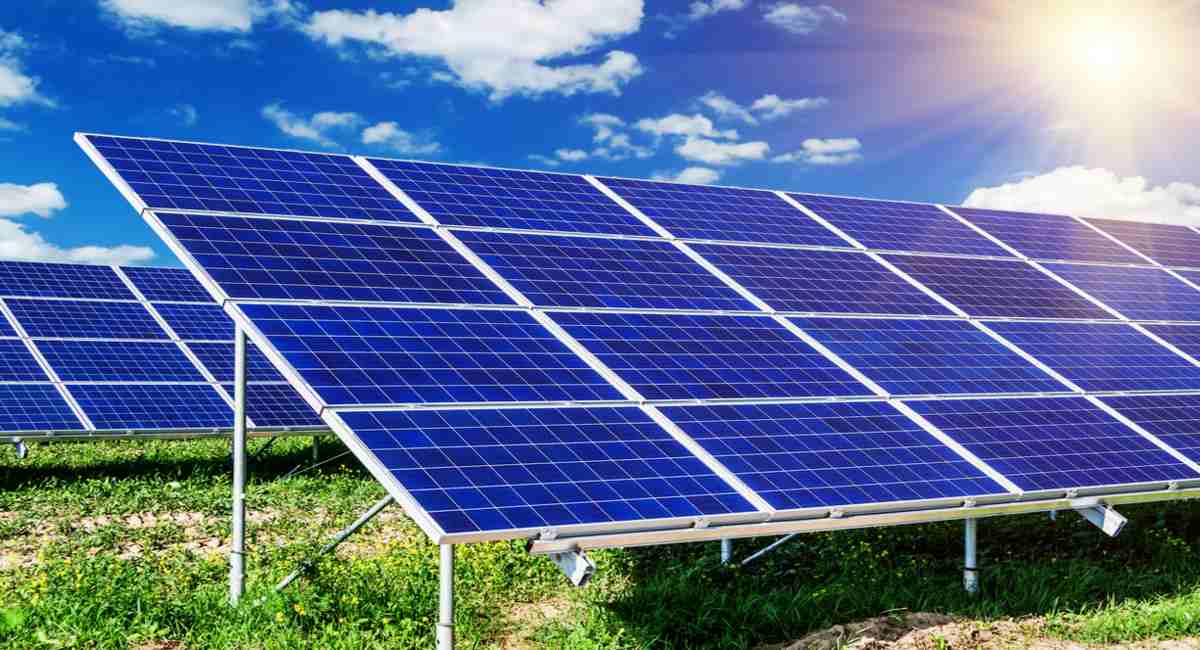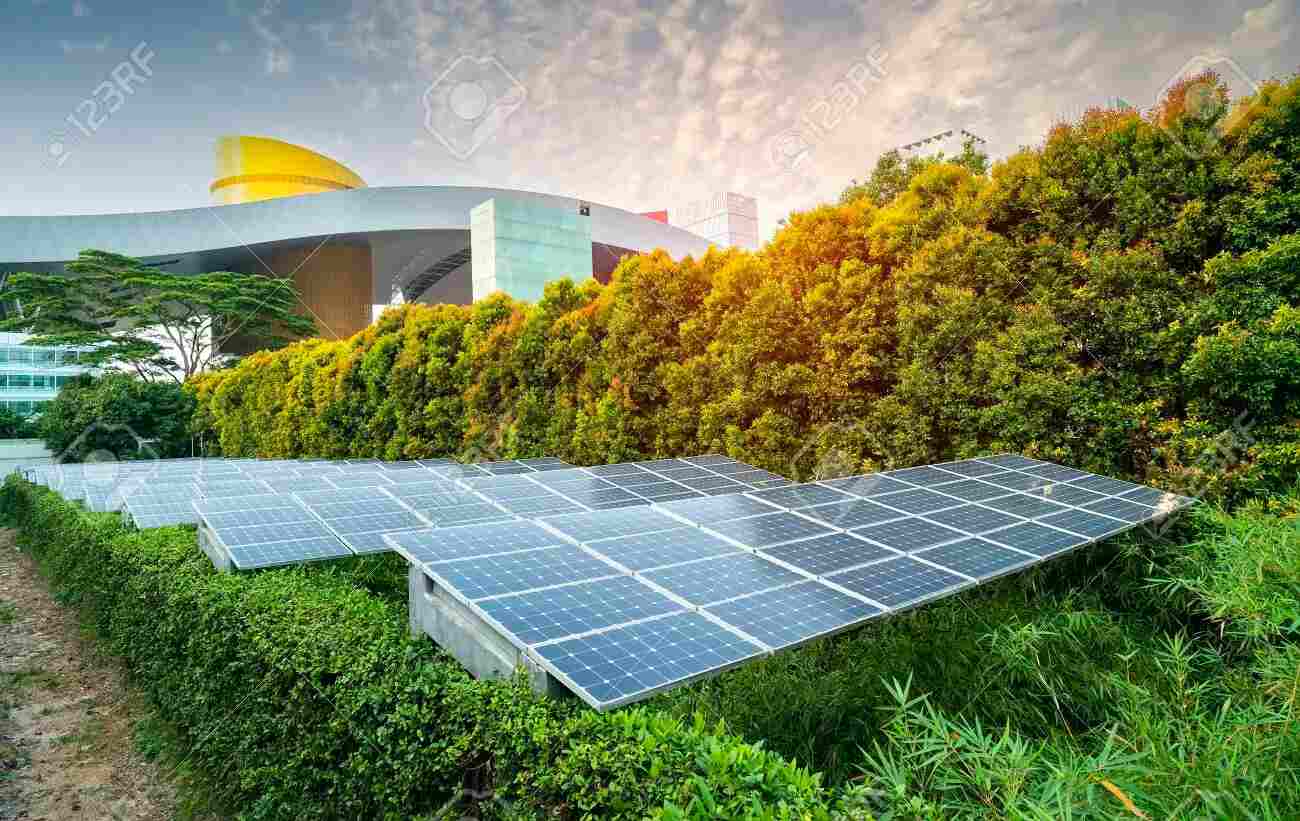Ground Mounted Solar Panels - Things You Need To Know

Overview:
Homeowners who want to minimize their carbon footprint may choose from a variety of technologies that offer hot water and heat for their houses. Installing solar panels on the roof is one of the most popular and cost-effective choices. However, many homeowners are hesitant to go this route because of the influence it would have on the aesthetic of their property. Furthermore, certain rooftops are not appropriate for the installation of solar panels, because they are either too weak to hold the weight or have insufficient surface area to deliver adequate energy. Some residences may also be hampered by planning rules, with solar panel installations prohibited in conservation zones and on listed structures.
Homeowners in such situations are forced to consider alternative technologies such as ground source heat pumps. However, these are not appropriate for every property, and the cost of installation may be prohibitive for some. However, there is another option: ground-mounted solar panels.
What Is A Ground-Mounted Solar Panel?
Ground-mounted solar panels are traditional solar panels that are installed on frames or poles that are attached to the ground. They are typically installed in the garden, but one of the main benefits of this type of system is the variety of mounting options it offers.
These systems can support both photovoltaic (PV) panels (used to generate electricity) and solar thermal panels (to heat water) and these systems are designed by solar software. Both flat plate and evacuated tube solar thermal panels are supported, giving homeowners the option of flat plate or evacuated tube systems.
Ground-mounted solar panels are those that are installed on the ground. Ground-mounted solar systems work similarly to rooftop solar systems in that panels are exposed to sunlight, which is converted to electricity by solar cells and used to power a single building or, in the case of solar farms, entire communities.
How Do Ground-Mounted Solar Panels Work?
The racking system of a rooftop solar installation is built for an existing building. When using ground-mounted solar panels, however, the support must also be built. This structure's height might range from a few inches above the ground to many feet.
In both types of PV systems, the electrical connections and protection mechanisms are the same. The key difference is that ground-mounted systems require more wire since they must be situated far enough away from your house to avoid any shadows cast by it. 60-cell solar panels, like those used in rooftop installations, are commonly used in residences, whereas 72-cell panels are employed in solar farms.
Roof-mount and ground-mount solar panels will produce the same amount of electricity if the same sunlight conditions and total wattage are used. A ground solar panel installation, on the other hand, can be designed with an orientation and tilt angle that maximizes the amount of sunlight captured, making the system productive. The tilt and orientation of a rooftop solar array, on the other hand, are limited by the slope of your roof.
A tracking mechanism, which keeps the PV panels angled toward the sun all day, can also increase the energy production of a ground-mounted solar panel system. This way, you can increase your electricity output and save money on your electric bill without having to install more panels. Because tracking devices are not designed for conventional roof structures, solar tracking is not an option for most rooftop installations.
What Are The Different Types Of Ground Mounted Solar Panels?
Frame Mounts:
A frame-mounted system mounts the panels on a fixed frame. The frame should be installed in a location that receives the most sunlight throughout the day. The panel's angles can also be adjusted to maximize exposure and efficiency. Frames come in a variety of sizes and can support up to four solar panels. If you have enough space, you can connect several frames into an array. The disadvantage of this installation is that the frame requires a large flat surface for mounting, and the panels are difficult to adjust once installed.

Pole Mounts:
Fixed pole-mounted systems are a more appealing option than frame-mounted systems. Up to four panels can be attached to a single pole using this mounting method. The main benefit of this system is that it does not require a large flat surface to be installed, allowing multiple poles to be mounted on a sloping site to create a large array.
The panels can also be mounted higher, allowing them to be positioned to avoid shadows cast by buildings or trees. It is also easier to adjust pole-mounted systems, allowing the panels to be more precisely positioned to collect sunlight, making them more efficient.
Tracking Systems:
The panels in tracking systems are mounted on motorized frames that follow the sun throughout the day. This ensures that the panels receive the maximum amount of sunlight, which greatly improves the system's efficiency when compared to fixed systems.
There are two types of tracking systems: single-axis and dual-axis. Single-axis systems track the sun in a straight line from east to west. Dual-axis systems, on the other hand, follow the sun in a more precise circular path, increasing exposure and efficiency.
This type of system should, in theory, be more efficient than a fixed system. In practice, however, the impact of buildings and trees can have a significant impact on performance. To get the most out of this type of installation, the panels should be installed in a large open space that is not affected by shadows from buildings or trees at any time of day.
Canopies:
Solar panels mounted on canopies are an excellent way to make use of limited ground space. In this type of installation, the panels are installed on a frame that is part of the structure. Solar canopies are an excellent way to power electric vehicle charging stations. Such structures take up little space, and the electricity generated is completely carbon-free.
Installing Ground-Mounted Solar Panels:
Residential solar panels are typically 65 by 39 inches (17.6 square feet) in size, and wind may exert a significant force when blowing against them. Solar panels can be blown away by a strong enough wind if they are not properly supported. When you install rooftop solar panels, a strong enough framework (your roof) already exists, but if you want a ground installation, you must build one separately. This is often accomplished using a reinforced concrete foundation or driven piles, while the structure itself is typically constructed of steel beams.
Solar panels perform better when they are directly facing the sun. Of course, the sun's position in the sky varies based on the time of day and season. The sun rises in the east during the early hours of the morning and sets in the west during the late afternoon. In addition, the sun's position in the sky is higher in the summer and lower in the winter. A rooftop solar power system has a fixed direction that is determined by the slope of your roof. Ground-mounted solar panels, on the other hand, may be outfitted with tracking devices that maximize the amount of direct sunlight received by their photovoltaic cells.
Dual-axis solar tracking can boost the power production of solar panels by up to 40% when compared to a fixed installation, depending on your geographic location. Single-axis tracking often increases productivity by 25% or more. Pole mounts make solar tracking easier to install.
Ground-mounted solar panels are a popular choice for do-it-yourself solar panel installations since they are easier to install. Each solar panel weighs around 40 pounds, and installing a large number of them on a roof is a hazardous task without the proper equipment and expertise (and a supporting crew). A ground-mount solar system, on the other hand, eliminates the issue of height.
Pros & Cons of Ground-mounted Solar Panels:
Pros:
- It's a great approach to avoid any present or prospective roof problems (limited space, structurally weak roof, etc.).
- increased energy output since you may have set your solar panels in the best direction and angle.
- It is simple to clean and keep in good condition.
Cons:
- It is pricier than a rooftop solar system.
- It occupies an important real estate area.
- It affects the overall appearance of the home.
- Installation is more difficult.
Are Ground-Mounted Solar Panels The Right Choice For My Home?

Ground-mounted panels may be preferable if your home consumes a lot of electricity. This is especially true if your property has a lot of open area, allowing you to put more solar panels than you can accommodate on your roof. Installing a bigger system will allow you to generate more electricity and satisfy your demands more effectively.
Of course, if your yard is tiny, you may not have enough space to install as many panels as you require. Furthermore, if you don't have enough area, placing solar panels on the ground will leave little to no room for your lawn, flower beds, or other landscaping. If this is essential to you, rooftop solar panels may be a better alternative.
Conclusion:
Ground-mounted solar panels are an excellent substitute for roof-mounted panels. While they are more expensive to install than typical roof-mounted panels, the additional energy they offer means they are frequently more cost-effective in the long term. Such systems also reduce the visual effect on your property, which is an important factor for some.
Because such systems are more adaptable to installation, they may be employed in more innovative ways. If you don't have the space or don't want to commit space in your yard to a solar array, this is an excellent option. Instead, ground-mounted solar panels can be used to build an architectural component such as a carport or brise soleil for a patio.

